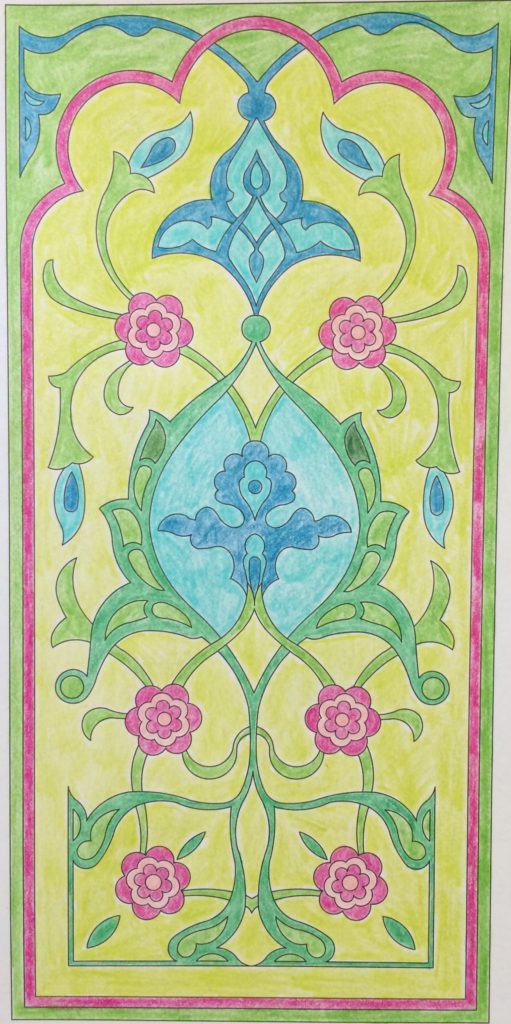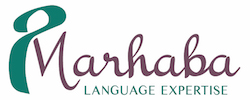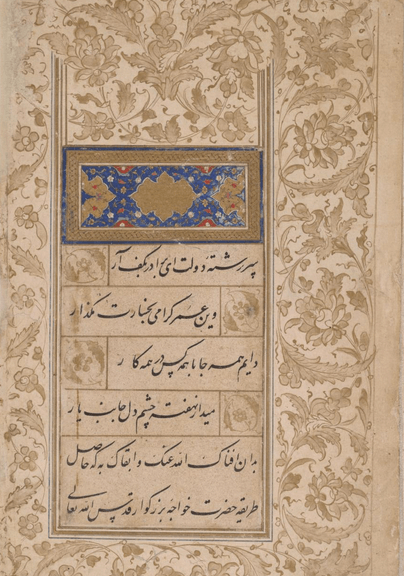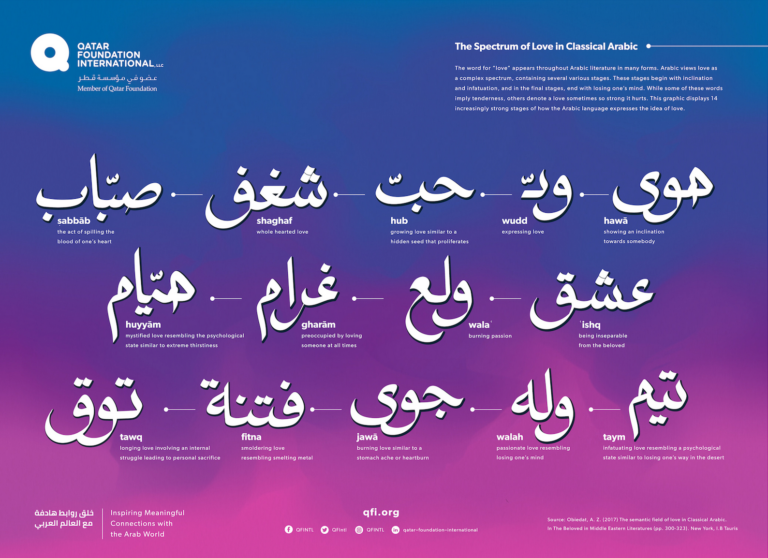Cultivating the Pleasure of Extensive Reading in Arabic (Part 2 of 2)
In the current climate, audio and video sources are on the rise, but reading remains a key skill for language learners. For those learners who already love to read (in any language), extensive reading can be a powerhouse for their progress toward increased proficiency in Arabic. This 2-part series is based on research in language teaching, with a focus on learners of Arabic whose L1 (first language) is English. It is intended for both educators and learners of Arabic (whether in a classroom or in an independent learning environment).


Reading Strategies for Arabic Learners
Reading skills that lead toward efficient comprehension include skimming and scanning, asking questions, summarizing, predicting, hypothesizing, clarifying, and interpreting. Teachers can help students cultivate accuracy by preparing students (introducing the topic, and thus reviewing key vocabulary and grammar) and by selecting texts with an appropriate level of difficulty. The more teachers prepare students, and the more carefully they oversee the selection of texts, the more students can comprehend without encountering linguistic or cultural barriers requiring explanation from the teacher. Ideally, learners alternate between “top-down” strategies (an eagle’s-eye view of the text, drawing on the reader’s intelligence and personal experience) and “bottom-up” strategies (like a magnifying glass, focusing on letters, morphemes, syllables, words, phrases, grammatical clues, discourse markers, and Arabic rabṭ, “connectors”).
If Arabic is the student’s second language, she may tend to read in a linear fashion. In her first language, she is probably accustomed to seeking out the meaning of the occasional unfamiliar word. When faced with a text full of unfamiliar words, this type of student will need to learn how to identify key words and pass over words of lesser significance. The more tolerance for unknown words (and the more vocabulary a student has), the more texts will be accessible.
Students may be encouraged to improve their guessing skills by asking key questions such as the following: 1) What kind of word is this? (noun, adjective, verb…If it is a verb, what tense and who is acting?) 2) What is the jidhr and the wazn? Paying attention to these two concepts (‘root’ and ‘pattern’) will help students to expand their vocabulary and progress rapidly in their understanding of Arabic. 3) Is this word part of a lexical couplet? Increasing students’ awareness of writing conventions will help them to become more independent and informed readers. Observant learners will note that good style in Arabic writing frequently pairs words with similar meanings (like saying that someone is ‘beautiful and pretty’). When they see a new word paired with a familiar word, and they know they are the same part of speech (both nouns, for example), then they will conclude that the words probably have similar meanings. For example: الملوك والسلاطين / ممتع ومضحك / كبير وواسع / ممتازة وعظيمة .
Developing the skill of skimming for main ideas will increase general comprehension and reading efficiency. Integral to skimming abilities is attention to format. The reader should draw on her knowledge of genres to identify the form of the text and pay attention to its conventions and organizing principles. This will also allow her to scan the text for specific information. For example, if she identifies the text as a newspaper article, she will know to look for key information in the title, the “by-line,” and at the beginning of the article. Teachers can train learners to develop their ability to anticipate information through familiarization with a variety of authentic texts.
Extensive Reading
Extensive reading offers considerable advantages to learners seeking to improve their readings skills through frequent practice. Extensive reading, usually for pleasure, requires the ability to understand main ideas, find specific information, and read quickly. Intensive reading, most often for information, requires the ability to read for details, understand implications, and follow relationships of thought throughout a text. While intensive reading focuses on grammatical forms and surface structure, it is only extensive reading that allows general comprehension through reading large amounts of material. Extensive reading is characterized by the following: large amounts of material, exposure to various topics and genres, reading within comprehension level, post-reading activities, and teachers modeling reading enthusiasm. Among the greatest benefits for Arabic learners are the following: 1) enhanced knowledge of spelling, grammar, text structure, and vocabulary (both passive and active), 2) increased knowledge of the world, 3) improved reading and writing skills, 4) greater enjoyment of reading.
With so many benefits, how early could Arabic learners engage in extensive reading? This will depend upon departmental priorities, students’ interests and abilities, and the availability of materials. As language teaching paradigms have come to focus more on the learner and the effective use of language, they have allowed for increased accommodation of individual interests, as well as earlier incorporation of subject-matter into the curriculum. Even in the absence of any official extensive reading program, especially at the lower levels, students may begin reading for pleasure outside of class, and will benefit from teachers willing to facilitate their students’ out-of-class strategies. Some students may form extracurricular reading clubs, or may read regularly out of class (one hour per week, for example).
What sort of role might extensive reading play in the Arabic language classroom? It seems most appropriate for advanced classes, in which students have a substantial foundation in vocabulary and grammar. At the high intermediate level, teachers may begin working with each student in developing reading programs according to individual interests and subjects of study. Silent reading at the intermediate and advanced levels may help students increase their reading speed. Students will need to be given adequate time for silent reading, both in and out of class. Reading in class shows students the value that is placed on reading. Of course, class sessions are neither sufficient nor appropriate for an entire extensive reading program, but they may provide valuable spaces for activities associated with reading. Teachers can keep track of learners’ reading accuracy through homework assignments (e.g. writing journal entries or reaction essays), class assignments (e.g. presentations), and extra-curricular interactions (e.g. discussions of the reading material).[1] The best activities will involve room for student creativity (such as role-play, dramatic reading, writing a letter to the author, designing a bookmark to suit the book, mapping the concepts of a text in small groups, sharing reactions to book in small groups, making wall displays, etc.). Activities can link reading to other language skills. Ideally, teachers will also meet with students out of class for individual counseling, in addition to giving feedback to written assignments.
Building a Library of Arabic Reading Materials
What kinds of texts might be used in Arabic language classrooms? When choosing texts, teachers seek to strike a balance between authenticity and readability. Occasionally, one may edit or abbreviate an authentic text in the interest of readability. If a student has studied languages that are linguistically related to his native language, he may be accustomed to beginning with texts intended for young readers. However, the vocabulary in children’s literature is only simple if the reader is already familiar with it.[2] For English-speaking learners of Arabic, the difficulty gap between childish vocabulary and advanced vocabulary is not very wide. For such learners, the most beneficial texts will not necessarily be considered easy by native speakers of Arabic. Instead, they will be most closely associated with the learner’s daily life and will display the vocabulary and grammar most accessible to the learner. They should also display clear development of the author’s ideas. Other characteristics of good introductory texts include the following: direct language and unambiguous intent, well-marked transitions, minimal description, recognizable people or situations, and an appropriate length.
The following are some examples of sources for materials that students of Arabic may find both interesting and accessible.
- al-Ahrām the most prominent Egyptian newspaper, from Cairo
- al-Jazīra the most prominent Arabic news source, from Qatar
- Sayyidatī a magazine of culture and women’s fasion, like Elle, from UAE
Books (i.e. short stories, poetry, novels, academic nonfiction) provide wonderful reading material for literary and cultural knowledge. However, they may also require a relatively advanced familiarity with vocabulary, as well as long periods of time for reading. In addition, readers accustomed to Western-educated literary culture may prefer novels which can prove too long and too challenging for their Arabic language level. Fortunately, Arabic writers have cultivated more accessible genres than the novel, with a long poetic tradition as well as a large corpus of short stories and prose. The greatest challenge for most Arabic language learners to find something to read is identifying and accessing appropriate materials. The well-prepared instructor can meet this challenge by maintaining awareness of students’ interests and of available Arabic materials at their language level. An appropriate reading recommendation can point students toward new knowledge and appreciation of Arabic language and culture. Below are some examples of sources for literary Arabic reading materials:
Intermediate:
- (anonymous) Alf layla wa-layla
- Ghassan Kanafani ‘Ā’id ilā Ḥayfā
- Emily Nasrallah (essays, articles, such as those in Fī l-bāl)
- Hanan al-Shaykh (short stories)
- Bahaa’ Taher (short stories)
- Zakariya Tāmir (short stories, such as al-Numūr fī l-yawm al-‘āshir)
Advanced:
- Radwa Ashour Thulāthiyat Gharnāṭa; al-Riḥla
- Alaa al-Aswani ‘Imārat Ya‘qūbiyān
- Ilias Khouri Bāb al-Shams
- Taha Husayn al-Ayyām
- Latifa al-Zayyat al-Bāb al-Maftūḥ
Unlike languages such as Spanish and French, there is not a wide selection of Arabic literary materials published in English-speaking countries. However, Bassam Frangieh has published two sources that may prove useful for Arabic learners with literary interests: Arabian Love Poems (Arabic by Nizar Qabbani, with English translations by Frangieh, Boulder: Lynne Rienner, 1999) and the Anthology of Arabic Literature, Culture, and Thought: From Pre-Islamic Times to the Present (New Haven; London: Yale, 2005). Both are bilingual (with English translation on facing page), and the latter includes audio recordings. Recordings may facilitate exercises that incorporate listening skills, though such activities are probably more suited to study outside of class in the interest of class time limitations. For the same reason, recordings may also take the place of teachers reading aloud. Instructors should consider carefully before incorporating materials from sources with vocabulary lists or translations since the presence of English words can quickly turn a reading exercise into a cultural activity. In a reading exercise, the text should be accessible enough so that students can read the Arabic for comprehension without a translation or a list of vocabulary. These sources may be most useful as supplementary out-of-class reading to sustain some students’ interests in Arabic literature, or in literature courses offered for students who may have little knowledge of Arabic.
Supporting Students by Example
The most effective way a teacher can help learners to improve their reading is through consistent encouragement and by demonstrating an interest in reading. Positive feedback goes a long way in increasing student confidence, an essential characteristic of a successful reader of a foreign language. Extensive reading programs afford teachers the opportunity to read alongside students in support of an atmosphere conducive to students’ success in reading frequently, effectively, and enjoyably. Instructors who generally read very little can increase their efficiency in reading by setting themselves goals and rewarding themselves for progress. Teachers serve as role models, and their enthusiasm (or lack thereof) will be contagious. In addition, familiarity with reading material and reading strategies serve teachers well in assisting students.
Conclusion
This series opened by investigating what makes a succesful reader: a reader who takes pleasure in frequently extending his or her ability to find meaning in texts. The tendency to concentrate on enjoyment, word definitions, or increasing the amount of material, to the exclusion of the other elements, reveals a lack of balance. Not only does successful reading aim for all these elements, but each element reinforces the others. If students enjoy reading, they will read more extensively. If they read more extensively, they will find more meaning in texts. If they find more meaning in texts, they will find reading more enjoyable. Reading is a cyclical activity and is most successful through holistic implementation of complementary strategies, within a comprehensive approach to language learning.
Further Reading
- Brustad, Kristen. “Reading Fluently in Arabic.” Handbook for Arabic Language Teaching Professionals. Eds. Kassem M. Wahba, Zeinab A. Taha, Liz England. Mahwah, NJ: L. Erlbaum Associates, 2006.
- Cramer, E.H. and M. Castle, eds. Fostering the Love of Reading: The Affective Domain in Reading Education. Neward, DE: International Reading Association, 1994.
- Dole, J.A., K.J. Brown, and K. Trathen. “The Effects of Strategy Instruction on the Comprehension Performance of At-Risk Students.” Reading Research Quarterly 31 (1996): 62-88.
- Goodman, Kenneth S. “Reading: A Psycholinguistic Guessing Game.” Theoretical Models and Processes of Reading. Eds. H. Singer and R.B. Ruddell. Newark, DE: International Reading Association, 1970.
- Green, John M. and Rebecca Oxford. “A Closer Look at Learning Strategies, L2 Proficiency, and Gender.” TESOL Quarterly 29 (1995): 261-97.
- Krashen, Stephen D. The Power of Reading: Insights from the Research. Englewood, CO: Libraries Unlimited, 1993.
- Swaffar, Janet K., Katherine M. Arens, and Heidi Byrnes. Reading for Meaning: An Integrated Approach to Language Learning. Englewood Cliffs, NJ: Prentice Hall, 1991.
This blog series was adapted from a paper written in 2007 for “Teaching Arabic as a Foreign Language,” a graduate-level course conducted in Arabic by Dr. Mahmoud Al-Batal at The University of Texas at Austin. If you are a learner of Arabic interested in a coach for your reading, keep me in mind. If you’re looking for a reading community, consider the MENA Lit Group at goodreads.com .
[1] In case the instructor prefers testing, I would suggest Swaffar for suggestions (especially pp. 153-72).
[2] Heritage learners or those with significant previous exposure have a similar advantage to young L1 learners, and may advance more rapidly in reading. They will need to be continually challenged to prevent boredom.
Also see Reading in a Foreign Language, a refereed online journal of issues in foreign language reading and literacy



